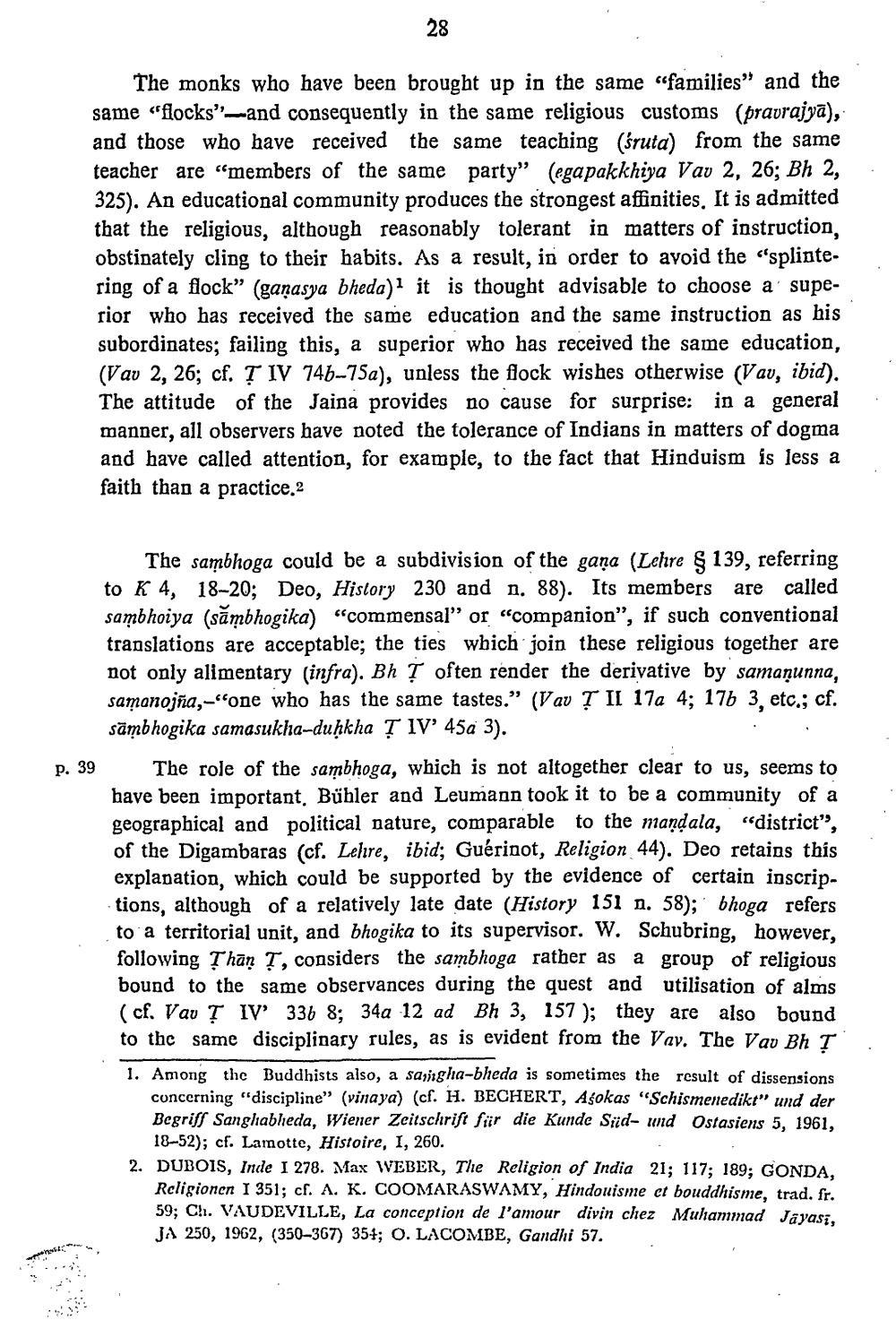________________
28
The monks who have been brought up in the same families" and the same “flocks”-and consequently in the same religious customs (pravrajya), and those who have received the same teaching (śruta) from the same teacher are “members of the same party" (egapakkhiya Vav 2, 26; Bh 2, 325). An educational community produces the strongest affinities. It is admitted that the religious, although reasonably tolerant in matters of instruction, obstinately cling to their habits. As a result, in order to avoid the "splintering of a flock” (ganasya bheda) it is thought advisable to choose a superior who has received the same education and the same instruction as his subordinates; failing this, a superior who has received the same education, (Vav 2, 26; cf. Ţ IV 74b-75a), unless the flock wishes otherwise (Vav, ibid). The attitude of the Jaina provides no cause for surprise: in a general manner, all observers have noted the tolerance of Indians in matters of dogma and have called attention, for example, to the fact that Hinduism is less a faith than a practice.2
P. 39
The sambhoga could be a subdivision of the gaña (Lehre § 139, referring to K 4, 18-20; Deo, History 230 and n. 88). Its members are called sambhoiya (sāmbhogika) "commensal" or "companion", if such conventional translations are acceptable; the ties which join these religious together are not only alimentary (infra). Bh Ţ often render the derivative by samaņunna, samonojña-"one who has the same tastes.” (Vav Ţ Il 17a 4; 176 3, etc.; cf. sāmbhogika samasukha-duḥkha Ţ IV' 45a 3).
The role of the sambhoga, which is not altogether clear to us, seems to have been important. Bühler and Leumann took it to be a community of a geographical and political nature, comparable to the mandala, "district", of the Digambaras (cf. Lelire, ibid; Guérinot, Religion 44). Deo retains this explanation, which could be supported by the evidence of certain inscriptions, although of a relatively late date (History 151 n. 58); bhoga refers to a territorial unit, and bhogika to its supervisor. W. Schubring, however, following Thân T, considers the sambhoga rather as a group of religious bound to the same observances during the quest and utilisation of alms (cf. Vav T IV' 336 8; 34a 12 ad Bh 3, 157 ); they are also bound to the same disciplinary rules, as is evident from the Vay. The Vav Bh T
1. Among the Buddhists also, a sajigha-bheda is sometimes the result of dissensions
concerning "discipline" (vinaya) (cf. H. BECHERT, Ašokas "Schismenedikt" und der Begriff Sanglableda, Wiener Zeitschrift für die Kunde Siid- und Ostasiens 5, 1961,
18-52); cf. Lamotte, Histoire, I, 260. 2. DUBOIS, Inde I 278. Max WEBER, The Religion of India 21; 117; 189; GONDA,
Rcligionen I 351; cf. A. K. COOMARASWAMY, Hindouisme et bouddhisme, trad. fr. 59; Ch. VAUDEVILLE, La conception de l'amour divin chez Muhammad Jayasi. JA 250, 1962, (350-367) 351; O. LACOMBE, Gandhi 57.




